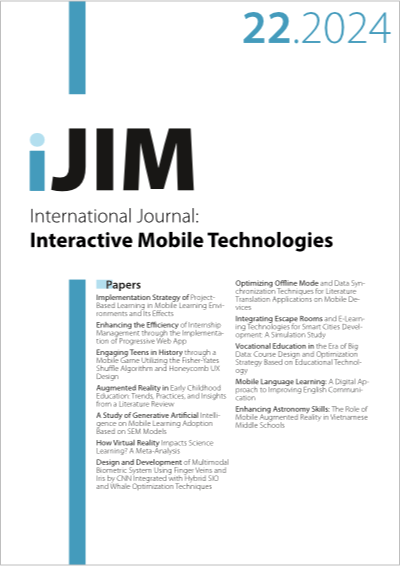Design and Development of Multimodal Biometric System Using Finger Veins and Iris by CNN Integrated with Hybrid SIO and Whale Optimization Techniques
DOI:
https://doi.org/10.3991/ijim.v18i22.50865Keywords:
Biometric System, Iris, Finger Vein, Deep Learning, Accuracy, OptimizationAbstract
Biometrics encompasses technological and scientific advancements in monitoring and interpreting biological data from the human body to enhance system security by offering precise and dependable patterns and techniques for person authentication and recognition. Its solutions are widely used by governments, the armed forces, and enterprises. Single sources of data in biometric systems, referred to as unimodal systems, are effective but frequently struggle with noisy data. Many of these challenges can be solved with multimodal biometric systems, which incorporate two or more biometric modalities. In this study, we utilized an optimized Convolutional Neural Network (CNN) for multimodal biometric recognition. For optimization, a hybrid of Swarm Intelligence (SI) and Whale Optimization (WO) algorithms was employed. The Finger Vein (FV) and iris modalities were chosen for biometric recognition. Data for both modalities were collected from the SDUMLA-HMT database and preprocessed before being fed into the CNN model for feature extraction and selection. Following the CNN modeling, both feature- and score-level fusion techniques were applied for individual recognition. The developed hybrid SI-WO-CNN model was evaluated against two other optimized models, namely the SI-CNN and WO-CNN. Experimental results show that the proposed hybrid CNN model achieves the highest accuracy, reaching 99% through the score-level fusion technique. Furthermore, the proposed model was compared with recent research works, demonstrating its effectiveness in biometric recognition.
Downloads
Published
How to Cite
Issue
Section
License
Copyright (c) 2024 Naitik ST, J V Gorabal

This work is licensed under a Creative Commons Attribution 4.0 International License.



